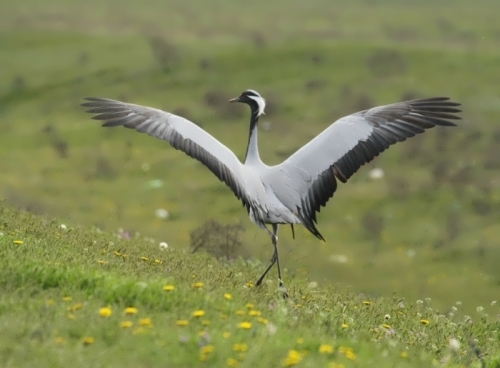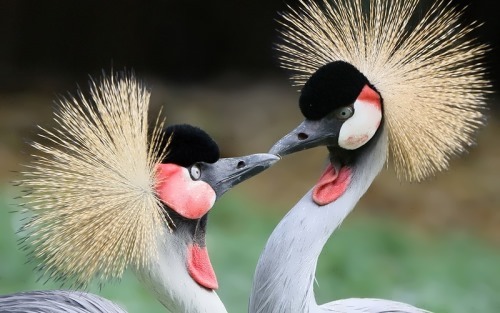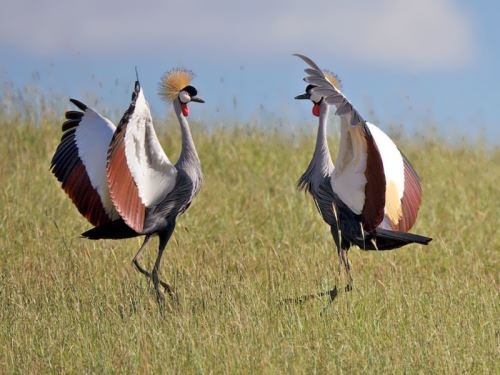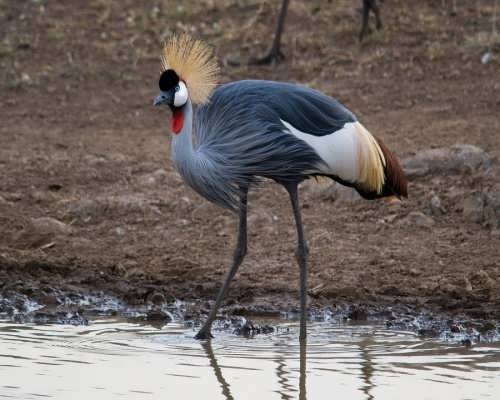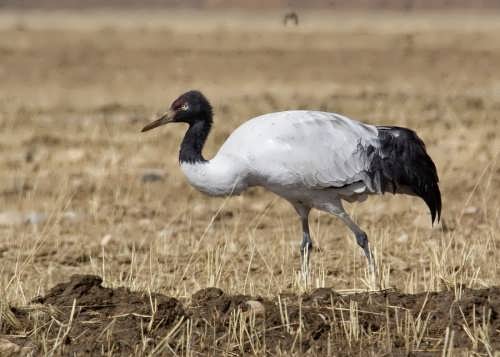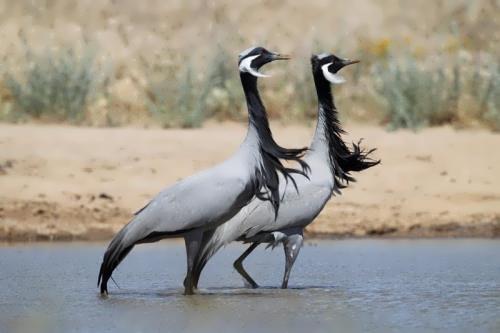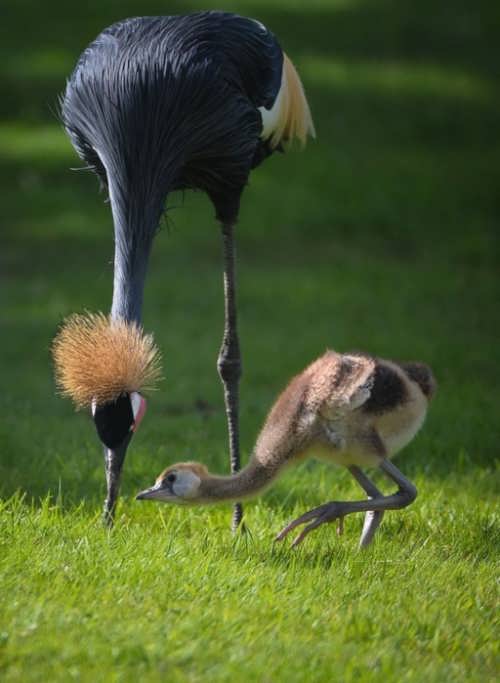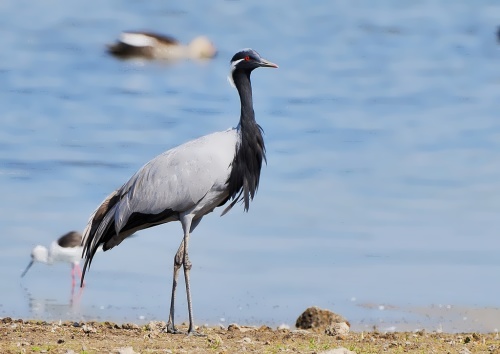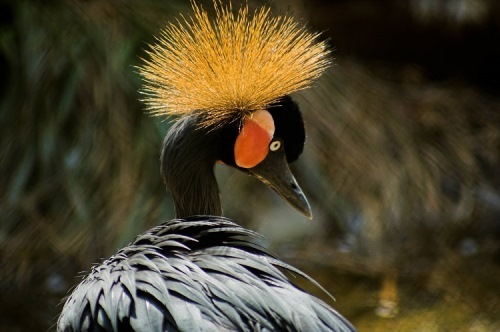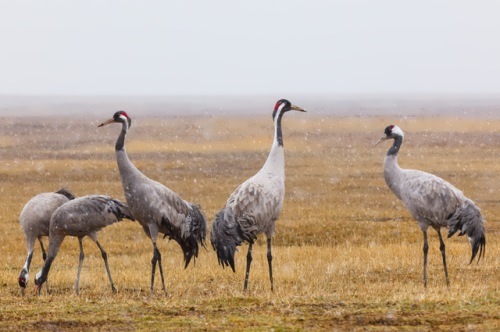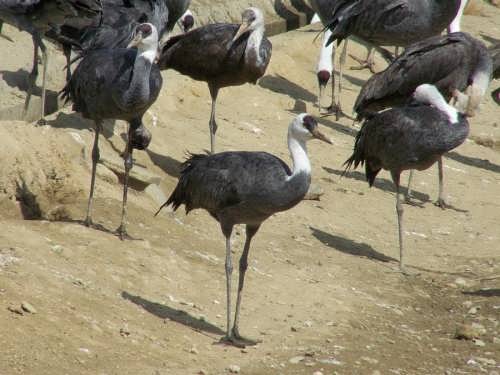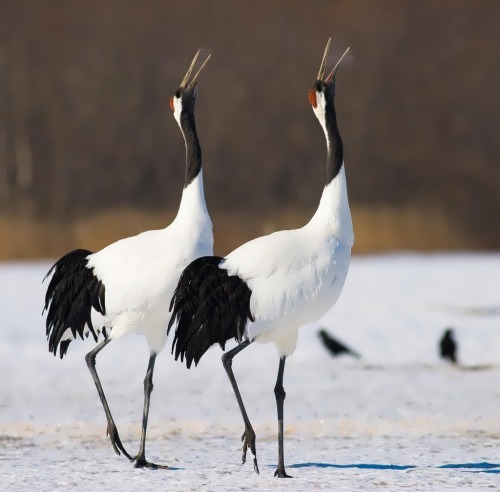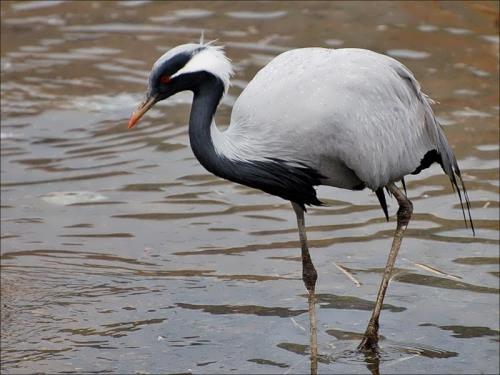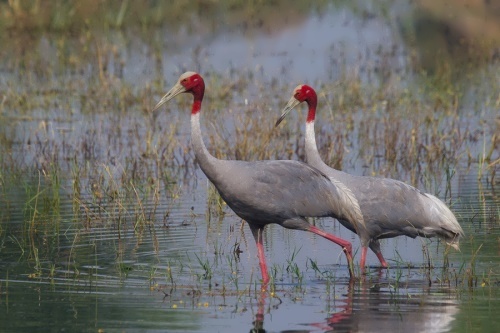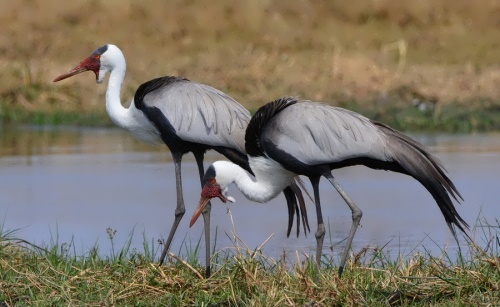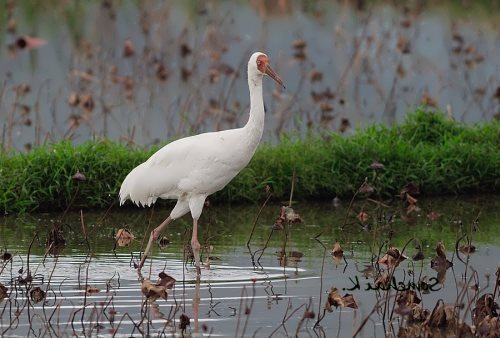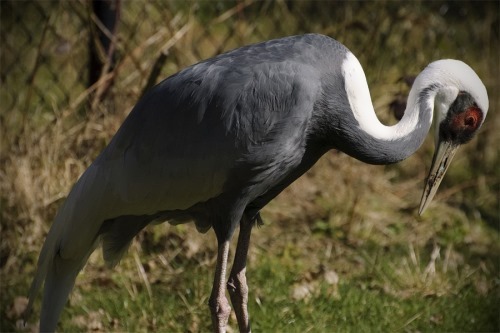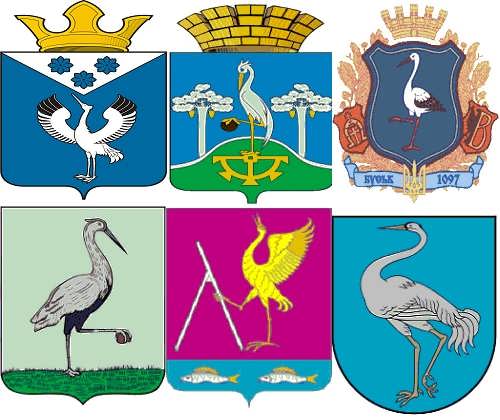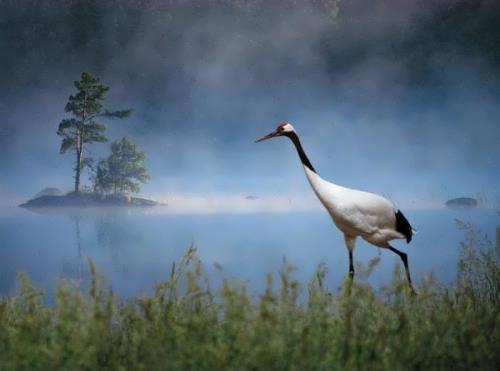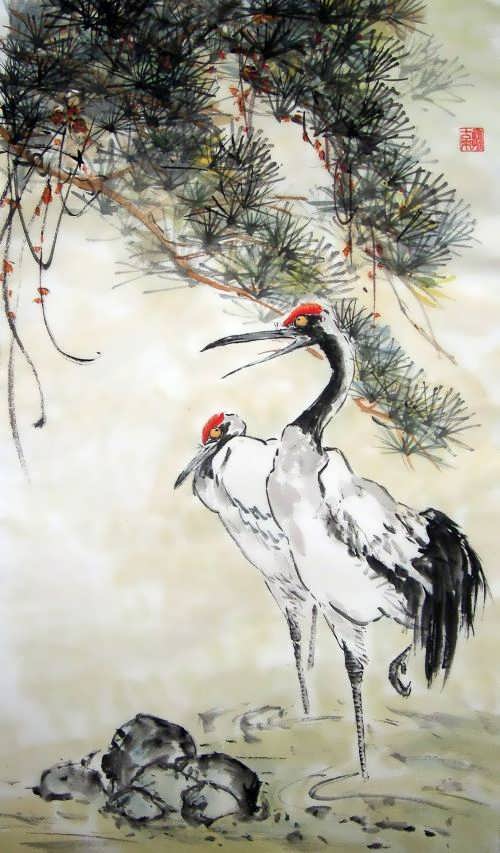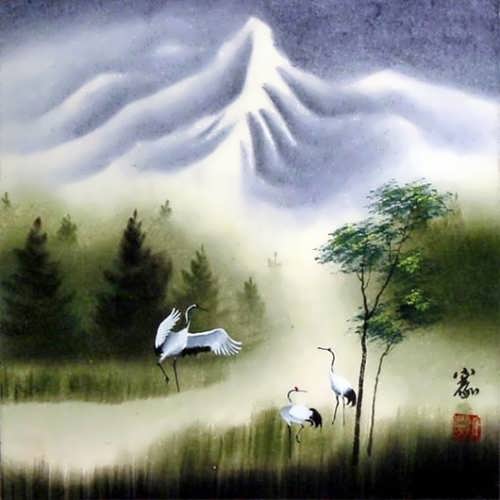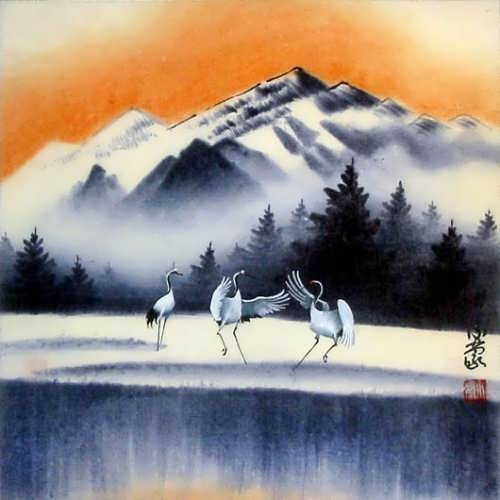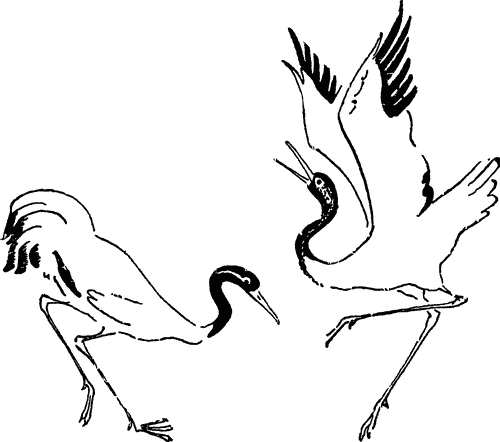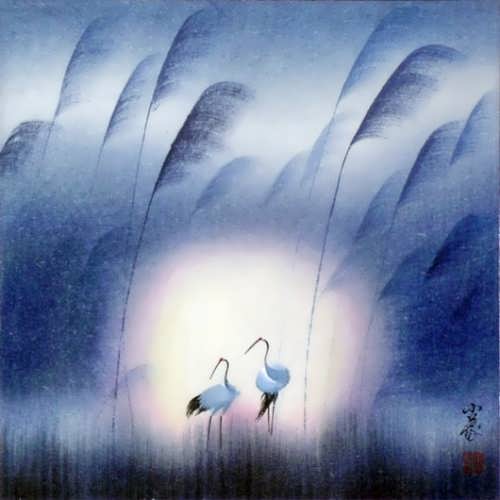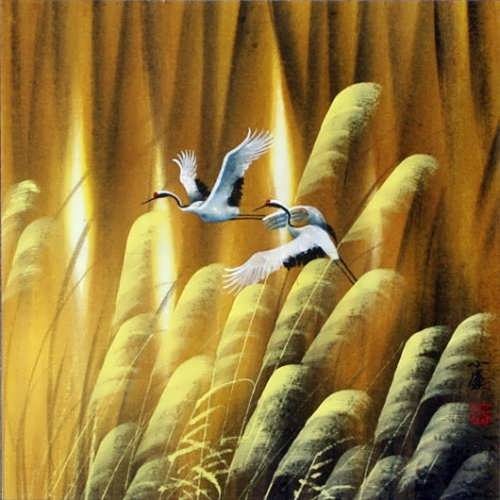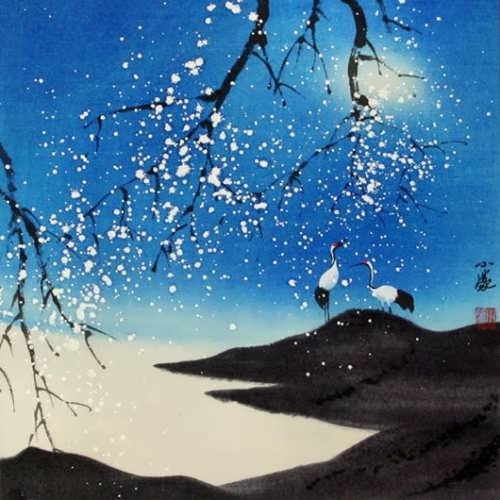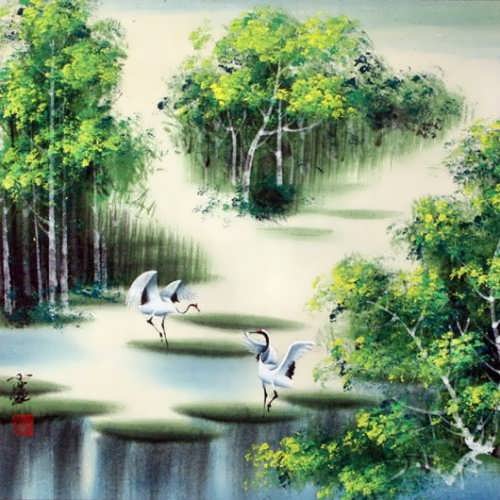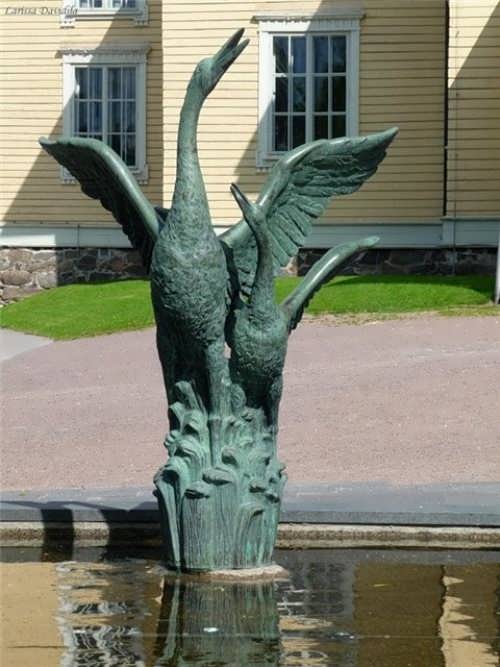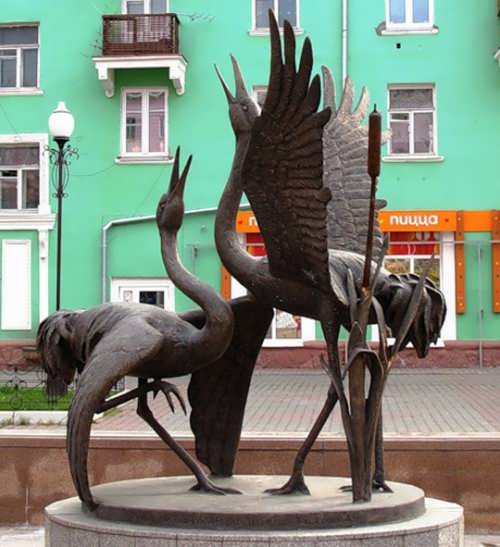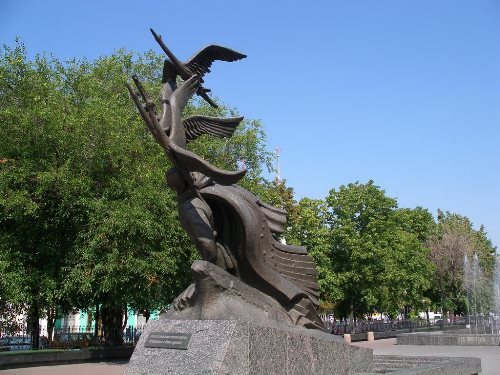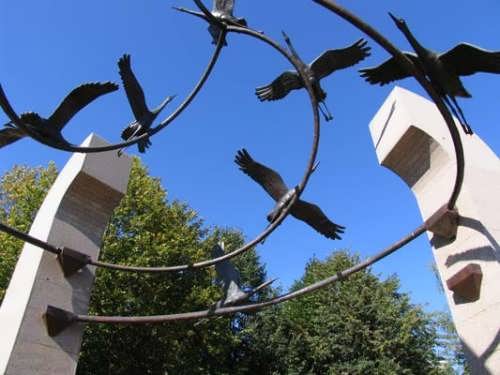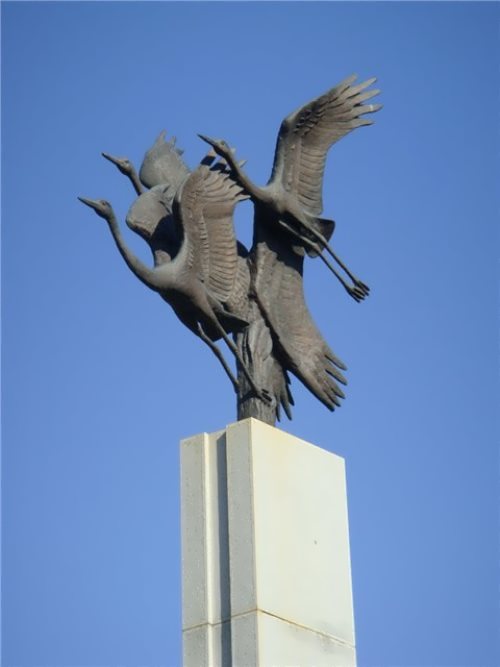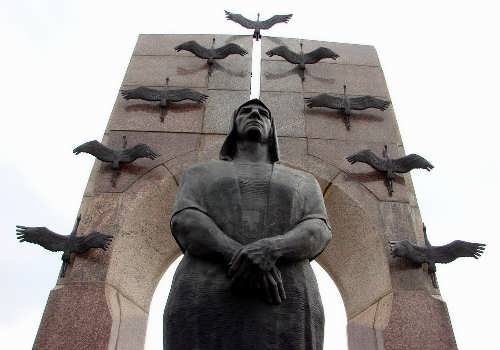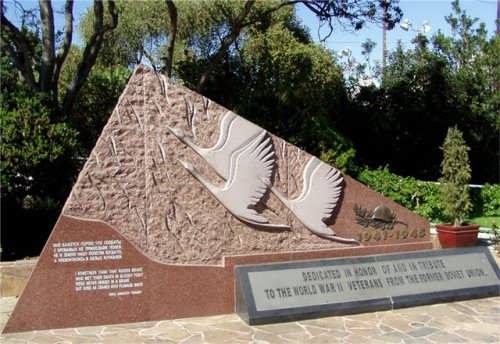Crane – beautiful wading bird
Cranes are tall, wading birds known for their courtship dances, and voices. Today there are 15 crane species throughout the world, except South America and Antarctica.
Cranes have long legs, a long neck, and a narrow, tapered bill. They eat grains, and invertebrates they catch in the water.
Most cranes migrate fairly long distances to their nesting sites.
The largest crane, and the rarest Asian crane, is the red-crowned, or Japanese, crane. It can weigh up to 11.4 kg. It has vivid red feathers on the top of its head, but its body is snowy white. In 1952, this crane became Japan’s national bird.
The smallest crane is the demoiselle crane of Europe and North Africa.
The blue crane is the national bird of South Africa.
The tallest crane is the sarus crane (2 m tall) of India, Cambodia, Nepal, Vietnam, and northern Australia. It is a gray bird with a head and throat of vivid red.
The Siberian white crane is a beautiful wading bird. It has long, reddish pink legs, a reddish orange face, and a snowy white body with black markings on its wings.
Young cranes eat insects, frogs, and small rodents, and adults feed mainly on the roots and tubers of aquatic plants.
Their courtship ritual includes rhythmic dances and flutelike calls. Females lay 2 eggs, and both parents take part in incubating. Usually only one chick survives infancy.
The whooping crane is so named because of its whooping, trumpet–like call. This marsh bird has a snowy–white body, white wings marked with black tips, long dark legs, black feet, a red face, and a long, pointed yellow bill. They feed on crabs, crayfish, frogs, rodents, insects, berries, and small birds. They mate for life. Both parents incubate the eggs for about 30 days before they hatch.
Crowned cranes are able to perch in trees like storks. They often lay three eggs. These birds have a beautiful puff of golden feathers coming from the back of the head.
Sandhill cranes are generally light-gray in color, with a red crown, black legs, and white cheeks.
Cranes live up to about 20 years in the wild and up to 80 years in captivity.
In China and Japan, the crane symbolizes vigilance, longevity, wisdom, loyalty, and honor.
In Japan, it is believed that the person who has made 1000 paper cranes guarantees himself good health. In 1955, with the death of 12-year-old Japanese girl, Sadako Sasaki, who died from the nuclear bombing of Hiroshima, paper cranes have become a symbol of the world – kids from around the world sent paper cranes to Japan for Sadako.
In Armenia, the crane is considered a national symbol of the country.
The second Sunday of September is the World Day of the crane.
